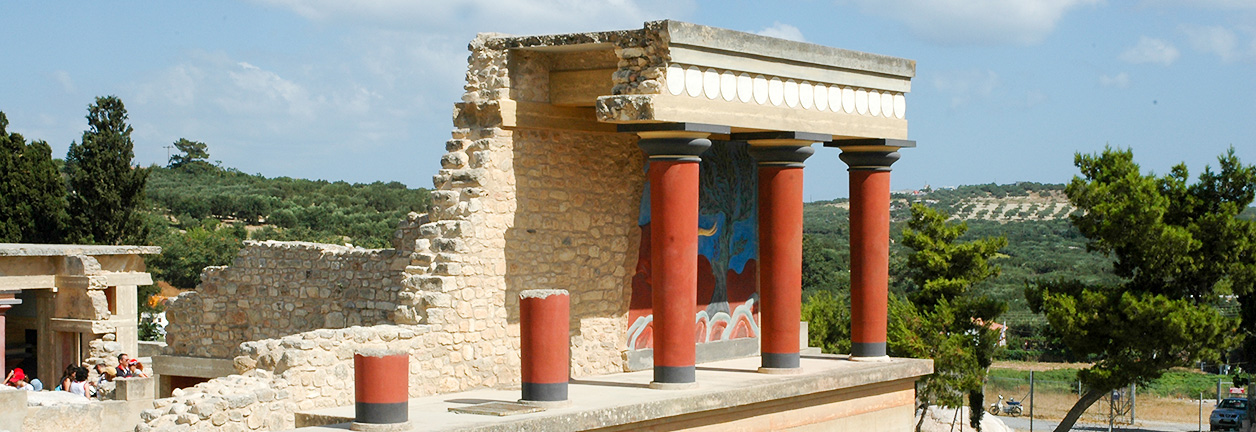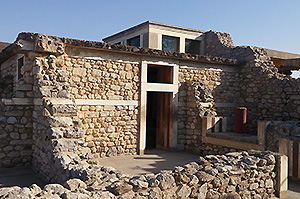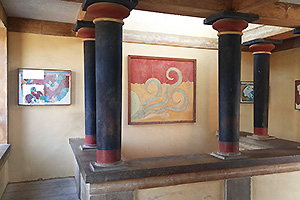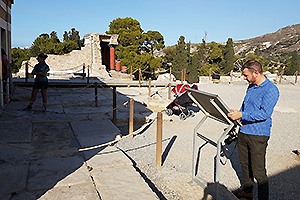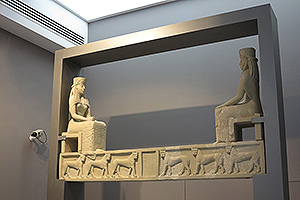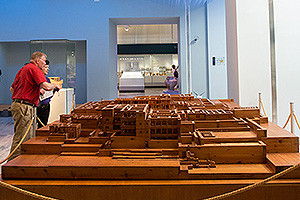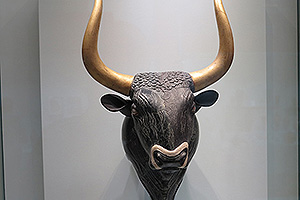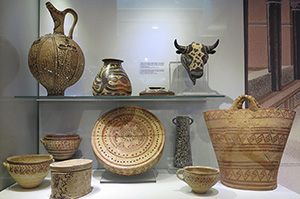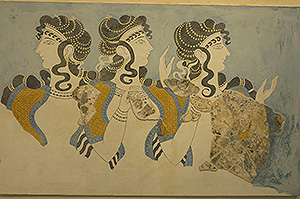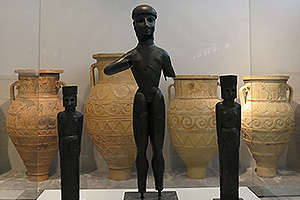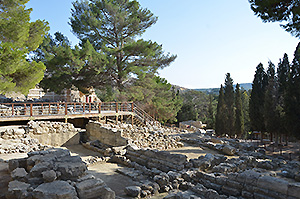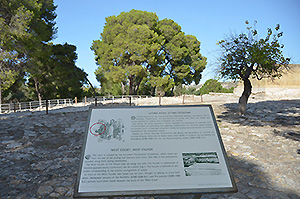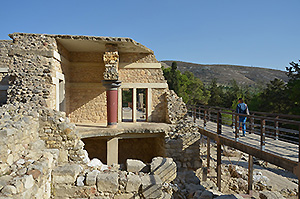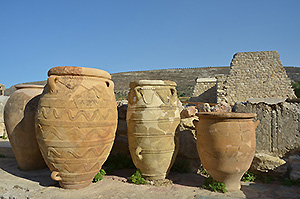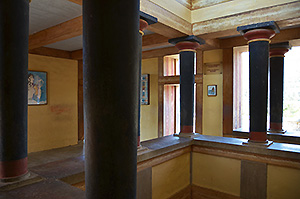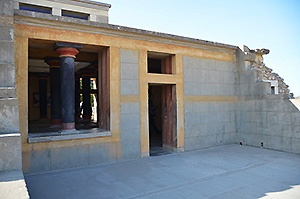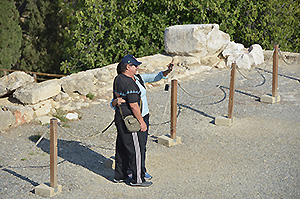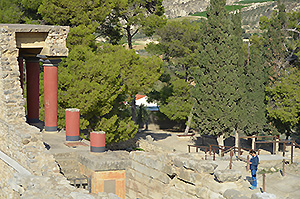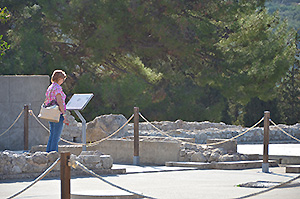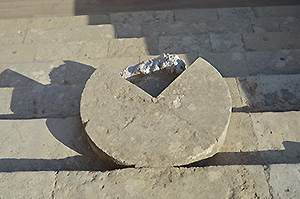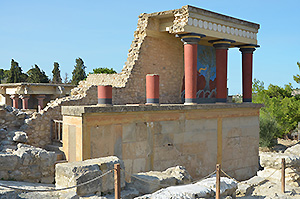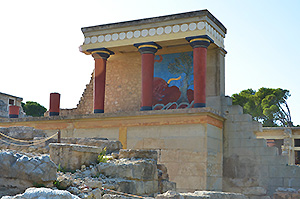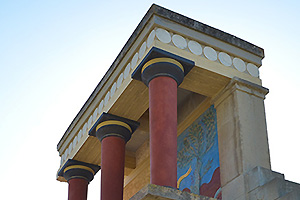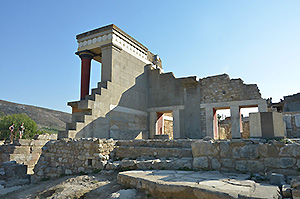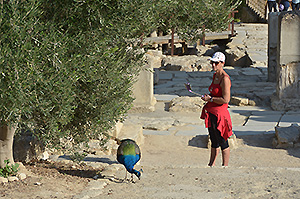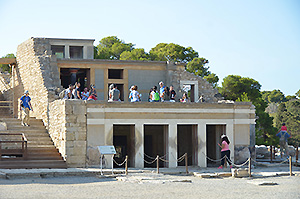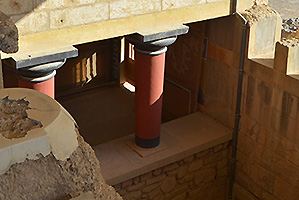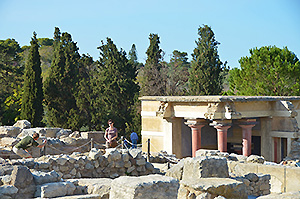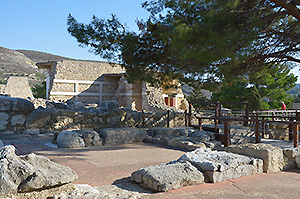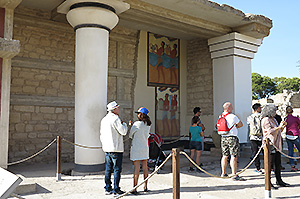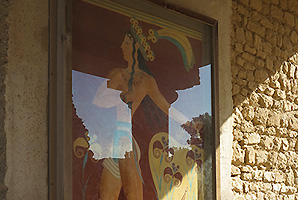details
This Day-Sight Seeing Tour "Konssos and the Highlights of the Minoan Civilization" is offered with the pick up points at the west coast of Crete.
Excursion to Knossos and the archaeological museum in
Heraklion. The first stop is shortly after
Rethymnon. There is a 30 minute stay for breakfast. After an hour's drive, always along the coastline with beautiful views, we visit the archaeological site the Palace of Knossos. There is a 2 hour guided tour by a professional archaeologist.
The Knossos Palace is a must; it is Crete's most famous Minoan Palace. Knossos is situated only a few minutes from
Heraklion, the capital city of Crete. Wherever your holiday destination is, Knossos is accessible from the coastal highway. After passing
Heraklion on the eastern side, you will see the signs to Knossos.
The rich finds from the Minoan civilisation are in the
Heraklion Archaeological Museum and you will see original frescoes from Knossos, jewellery and artwork here. Knossos is the largest of the preserved Minoan palatial centres. The site has had a very long history of human habitation, beginning with the founding of the first settlement circa 7000 B.C. The site consists of four palaces. The oldest palace, The Little Palace, dates from 2000-1350 B.C. The Little Palace, with the double megaron, a pristyle hall and scraped wall masonry dated to the 17 th-15th centuries B.C. (to the west of the main palace).
The Royal Villa distinguished by the double staircase, with two flights of stairs and the pillar crypt, dates from the 14th century B.C. and lies to the NE of the palace. The Royal Villa may have been the residence of an aristocrat or a high priest. The third is the House of the Frescoes. It is located to the NW of the palace and is a small urban mansion with rich decoration on the walls. Dates from the 15th, 14th-12th centuries B.C. The fourth is the Unexplored Mansion. Probably a private building of private-industrial function and lies to the NW of the main palace. It is rectangular, with a central, four-pillared hall, corridors, storerooms and the remains of a staircase. Dates from the 12th to 14th centuries B.C.
Knossos was discovered in 1878 by Minos Kalokairinos, a Cretan merchant and antiquarian. The English archaeologist Arthur Evans was able to purchase the entire site and conduct the main excavations in 1900.
After visiting Knossos we head on to the Capital of Crete
Heraklion for visiting the archaelogical museum. It is one of the most important museums of Europe. The Archaeological Museum of
Heraklion is the most important museum in Greece and among the most important in Europe. There you will see the oldest witness of our European civilisation, with artefacts from all periods of Cretan prehistory and history. The museum covers a chronological span of over 5,500 years from the Neolithic period to Roman times.
The two storey building has large exhibition spaces, laboratories, a drawing room, a library, offices and a special department and the Scientific Collection Room, where several finds are stored and studied.
After 2 hours Stay at the Capital, we take the bus back to the west with a short coffee break in
Rethymnon.
The arrival time in the region around
Chania is around 6:30 p.m.
1.Transport by air-conditioned coach
2. Guided Tour through Knossos
3. explore the Capital on your own or visit the archaeological museum of Crete, one of the most important museum of Europe.
Please bear in mind that this excursion is non-refundable. If you must cancel this tour you won´t get money back.
You can book this tour till 48 hours before arrival ( subject to availability), payment with credit-card. After booking you´ll get an email-voucher from us with all information needed.


